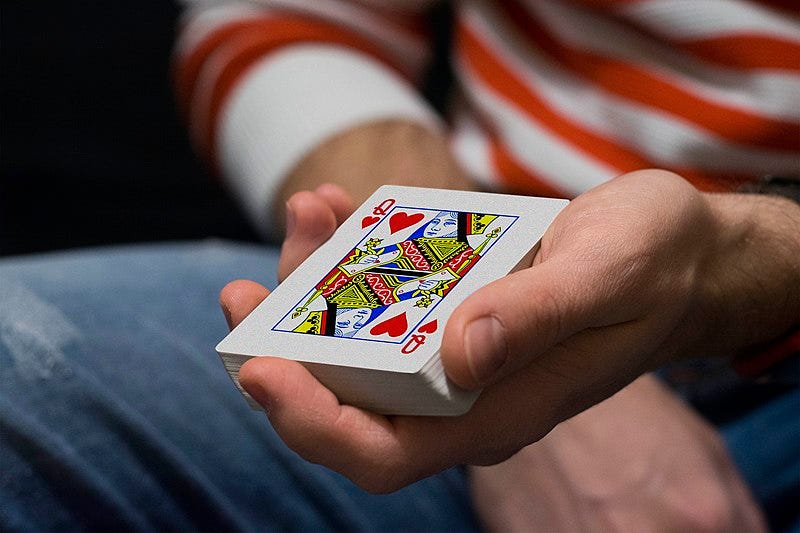The Infinite Possibilities of a Deck of Cards
Written on
Chapter 1: The Uniqueness of Card Configurations
Imagine you're given a shuffled deck of 52 cards and asked to select one. The mind-boggling fact is that this particular arrangement has never appeared before and will never appear again. This seems improbable, doesn't it? Considering that playing cards have been used since the 9th century and the standardized deck emerged in 1516, one would assume that arrangements would repeat over time, especially given the countless games played by people, from cowboys to World War II soldiers.
So, how is it possible that no two configurations are alike? Tim Urban explains this through a mathematical concept known as factorial. The unique arrangements of a deck can be quantified as 52 factorial, or 52! in mathematical terms.
A factorial involves multiplying a series of descending numbers. For instance, 3! equals 3 * 2 * 1, which totals 6. Similarly, 5! is 5 * 4 * 3 * 2 * 1, equating to 120. Therefore, 52! translates to 52 * 51 * 50 and continues downward. The final outcome is an astronomical figure:
80658175170943878571660636856403766975289505440883277824000000000000
To grasp the enormity of this number, imagine reshuffling the deck every second while generating new combinations. Here’s how long it would take to explore all possibilities: Begin your journey by standing near the Pacific Ocean, perhaps in San Diego. Start shuffling once every second.
If you continued this for a billion years—yes, a billion—you would then take a single step. After another billion years of shuffling, you take another step. You would repeat this pattern until you’ve circumnavigated the globe, which is approximately 40,000 kilometers or 25,000 miles—equivalent to a thousand marathons.
Eventually, you would return to San Diego. But your journey isn’t over. You’d then extract one drop of water from the Pacific Ocean. Yes, you’d have to repeat the entire process. Keep shuffling! One step every billion years, one journey around the world, one drop removed. Given the ocean's vast volume of 700 million cubic kilometers, this task would take an eternity.
Once the ocean is empty, your reward is a single sheet of paper, which you place flat on the ground. Shuffle once more. With each cycle of emptying or refilling the ocean, you earn another piece of paper, stacking them higher and higher.
How tall will this stack need to be? Higher than the Empire State Building? Airplane altitude? No, the stack must reach the sun, situated 150 million kilometers away. Ultimately, you’ll need to create 3,000 of these towering stacks before you can expect to see a repeat of a 52-card configuration.
One shuffle every second, one billion years, one step, one global trip, one ocean drop, one complete ocean restored, and one piece of paper each time. Repeating this entire process 3,000 times is how long it would take to find a previously existing arrangement of a deck of 52 cards.
Despite being minuscule in the grand scheme of the universe, we possess the capability to contemplate its mysteries and tackle our challenges. Isn’t it remarkable?
The universe's vastness far exceeds our comprehension, yet astonishingly, we can encapsulate it all in the simplicity of a shuffled deck of cards.
Section 1.1: The Mathematics Behind the Shuffle
Understanding factorials is essential for grasping the uniqueness of card configurations.
Subsection 1.1.1: Visualizing the Factorial

Section 1.2: The Implications of Infinite Combinations
Chapter 2: Holding the Universe in Your Hand
In this video, Christophe Galfard explores the concept of holding the universe within our grasp, illustrating the vastness of possibilities through engaging storytelling.
This book review by Christophe Galfard delves into the ideas presented in "The Universe in Your Hand," providing insights into how we can perceive the cosmos.